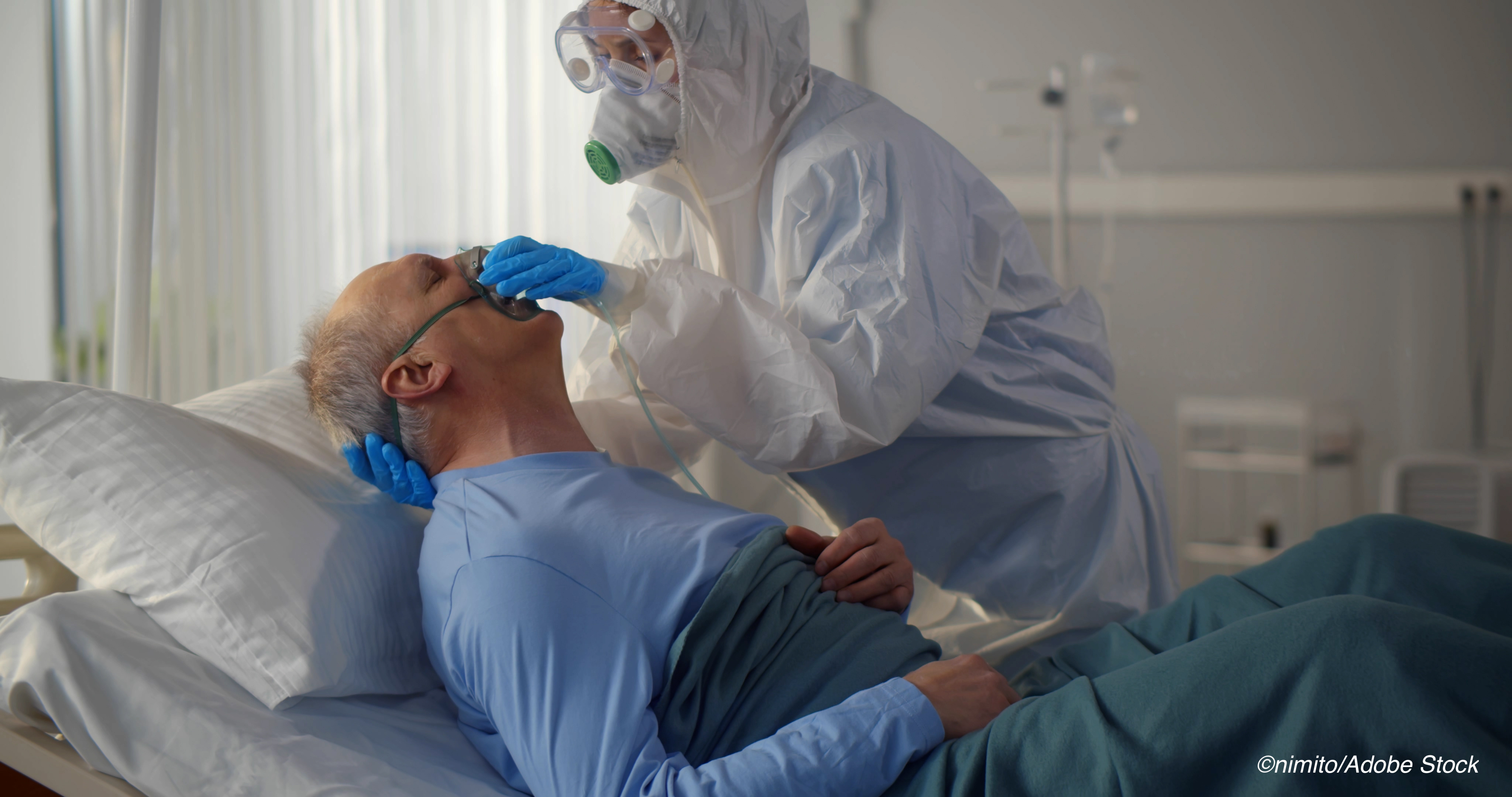
Bacterial co-infections and secondary infections appear rare among patients hospitalized with Covid-19, according to findings from a large, prospective cohort study.
The analysis of data from close to 49,000 patients hospitalized for Covid-19 early in the pandemic identified a total of 1,107 cases of confirmed bacterial infection. Most microbiologically-confirmed infections were secondary infections, and gram-negative organisms and Staphylococcus aureus (S. aureus) were the most frequently identified pathogens.
The study findings suggest that the focus in this patient population should be on restricting empirical prescribing of antimicrobial treatments, especially at hospital admission, wrote lead researcher Clark D. Russell, MBChB, of the United Kingdom’s University of Edinburgh Centre for Inflammation Research, and colleagues, in The Lancet Microbe, published online June 2.
“The high frequency and nature of inpatient antimicrobial use might have long-term negative consequences for antimicrobial resistance,” Russell and colleagues wrote. “Specific targets exist for antimicrobial stewardship and should be integrated into Covid-19 patient care pathways.”
The researchers noted that bacterial co-infections and secondary infections commonly accompany influenza—for example, 23% of patients with laboratory-confirmed influenza were found to have co-infection in a 2016 meta-analysis.
National and international Covid-19 guidelines vary with regard to recommendations on empirical antimicrobial therapy, with some, but not all, recommending empirical treatment in patients with severe disease.
“Living systematic reviews and meta-analyses have reported a low prevalence of confirmed bacterial co-infection (8%), but a high proportion of patients with Covid-19 received antimicrobials (pooled prevalence 75%),” wrote Russell et al. “The collective implication of these studies is a widespread failure of antimicrobial stewardship with the potential to worsen the global antimicrobial resistance crisis.”
Most prior studies of bacterial infections in patients with Covid-19 have been retrospective with small sample sizes, and Russell and colleagues noted that few have systematically reported the spectrum of bacteria, timing of infection onset, or frequency and nature of antimicrobial use.
Their data came from an ongoing, prospective cohort study of patients hospitalized in 260 hospitals in England, Scotland, and Wales with laboratory confirmed or physician-defined high likelihood of Covid-19. Patients with a negative SARS-CoV-2 test were excluded from their analysis, along with those without a recorded outcome at 28 days after admission.
A total of 48,902 patients admitted to the hospital between Feb. 6 and June 8, 2020 were included in the analysis (median age, 74 years [IQR 59–84], 42.6% female).
Microbiological investigations were recorded for 8,649 (17.7%) patients, with clinically significant Covid-19-related respiratory or bloodstream culture results recorded for 1,107 patients.
A total of 762 (70.6%) of 1,080 infections were secondary, occurring more than two days after hospital admission. S. aureus and Haemophilus influenzae were the most common pathogens causing respiratory co-infections (diagnosed ≤2 days after admission), with Enterobacteriaceae and S. aureus most common in secondary respiratory infections.
Bloodstream infections were most frequently caused by Escherichia coli and S. aureus.
Among patients with available data, 37% had received antimicrobials in the community before hospital admission and 85.2% with inpatient antimicrobial data received one or more antimicrobial at some point during their admission.
A significant study limitation cited by the researchers was the challenge of retrospectively assigning clinical significance to culture results, which was “further restricted in this study, as clinical findings that would contribute to diagnosis of bacterial infection were not collected at the time of microbiological sampling.”
They noted that the microbiological diagnosis of bacterial or fungal co-infection is itself challenging, “especially in the context of Covid-19. Fewer diagnostic procedures might have been done during the pandemic because of clinical pressure and concerns regarding health-care worker safety (particularly from aerosol generating procedures, such as bronchoalveolar lavage), and inter-site variation in microbiological sampling is likely.”
The researchers noted that despite the lack of evidence for bacterial infections in the cohort, the majority of patients received antimicrobial treatments.
“Combined with high morbidity and mortality, the absence of effective therapeutic options for Covid-19 during the study period, and clinical uncertainty during acute illness, high rates of antimicrobial prescription are unsurprising,” they wrote. “Nevertheless, the infrequency of confirmed co-infection supports restrictive empirical antimicrobial usage.
“Antimicrobials should be restricted to individuals with atypical features of Covid-19, such as purulent sputum or lobular pneumonia, or evidence of distinct non-respiratory co-infection,” they added. “Blood and sputum cultures before empirical antimicrobial treatment and incorporating trends in inflammatory markers into decision making could also support judicious antimicrobial use.”
They further noted that the absence of elevated white cell count at baseline and antimicrobial-associated C-reactive protein reduction can exclude co-infection in roughly half of patients with Covid-19, while procalcitonin “might be an additional decision-making adjunct, using a threshold of 0.25 ng/mL or less to identify patients with a reduced likelihood of bacterial infection.”
“Regular review of drug charts with discontinuation of antimicrobials if co-infection is deemed unlikely, supported by negative microbiological investigations, are also key to minimize unnecessary antimicrobial exposure,” Russell and colleagues wrote, adding that when antibacterials are indicated, “the choice of antimicrobial should be tailored to likely pathogens and local resistance patterns, with treatment duration limited to 5 days if lower respiratory tract infection is suspected.”
- Bacterial co-infections and secondary infections appear rare among patients hospitalized with Covid-19, according to findings from a large, prospective cohort study.
- Most microbiologically-confirmed infections were secondary infections, and gram-negative organisms and Staphylococcus aureus (S. aureus) were the most frequently identified pathogens.
Salynn Boyles, Contributing Writer, BreakingMED™
Funding for this research was provided by the National Institute for Health Reearch, UK Medical Research Council, Wellcome Trust, UK Department for International Development, Bill & Melinda Gates Foundation, EU Patform for European Preparedness Against (Re-emerging Epidemics, NIHR Health Protection Research Unit in Emerging and Zoonotic Infections at the University of Liverpool, and NIHR HPRU in Respiratory Infections at Imprerial College London.
Cat ID: 190
Topic ID: 79,190,730,933,190,926,192,927,151,928,925,934

